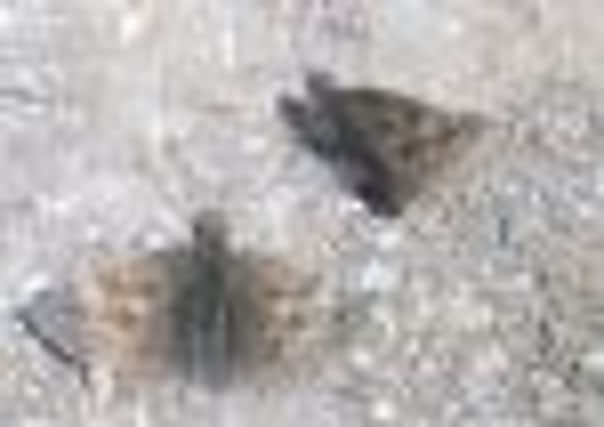Butterflieswhich have returned


They are dingy skippers- even the name is dull- but they are true indicators of healthy downland and in recent years some of their old strongholds have been fading away. Now they have returned with a vengeance.
If only the same could be said for some other downland species such as the pearl-bordered fritillaries that have vanished in the past 25 years. Could the dingy skipper be a sign of things to come back again? We all hope so.
Advertisement
Hide AdAdvertisement
Hide AdI photographed this pair in the picture as they were wondering whether to mate while I was doing my weekly round of the Downs on Kingley Vale.
I carry out a weekly sampling walk of all the butterflies there and have done since 1976. Back then the dingy skipper gave a healthy log of 141 sightings on my five mile sample.
That of course was the year of the great drought which lasted until September 5. Numbers then fell away, though there was a lesser peak of 66 in 1991.
Four years later this bullish little butterfly faded out of the picture and was not seen again for 13 years. The two years ago, two were logged on the count. Last year the number leapt up to 19. I could hardly believe my eyes.
Advertisement
Hide AdAdvertisement
Hide AdAlready this season, with another week to go of its flight time, it has bounced up to 30.
The dry season ha something to do with it and it is anybody’s guess what will happen now. But at least the little indicator of downland health has not vanished from our Downs.
The female lays her eggs on bird’s foot trefoil and in the past three years this well recognised flower with its bright yellow ‘eggs and bacon’ colours of yellow and dark red, has flourished everywhere.
This has also resulted in an upsurge of common blue butterflies with a record log at Kingley Vale of 600. Grazing of downland slopes has to be just right to get this vital food plant at peak cropping potential for these two butterflies.
Advertisement
Hide AdAdvertisement
Hide AdThe return of the rabbit and also fallow deer grazing have helped to keep turf at its optimum, but sheep grazing in winter is needed.
The dingy skipper was first mentioned as a British species by Charles Merrett in 1666 when the new Elizabethans expanded science and culture and began to look around at other travellers on the planet other than themselves and their farm stock.
If you want to see one, you will have to get your eye in because quite honestly they are all but invisible against the patches of bare ground on which they bask, and anyway they are not much bigger than a bluebottle fly.